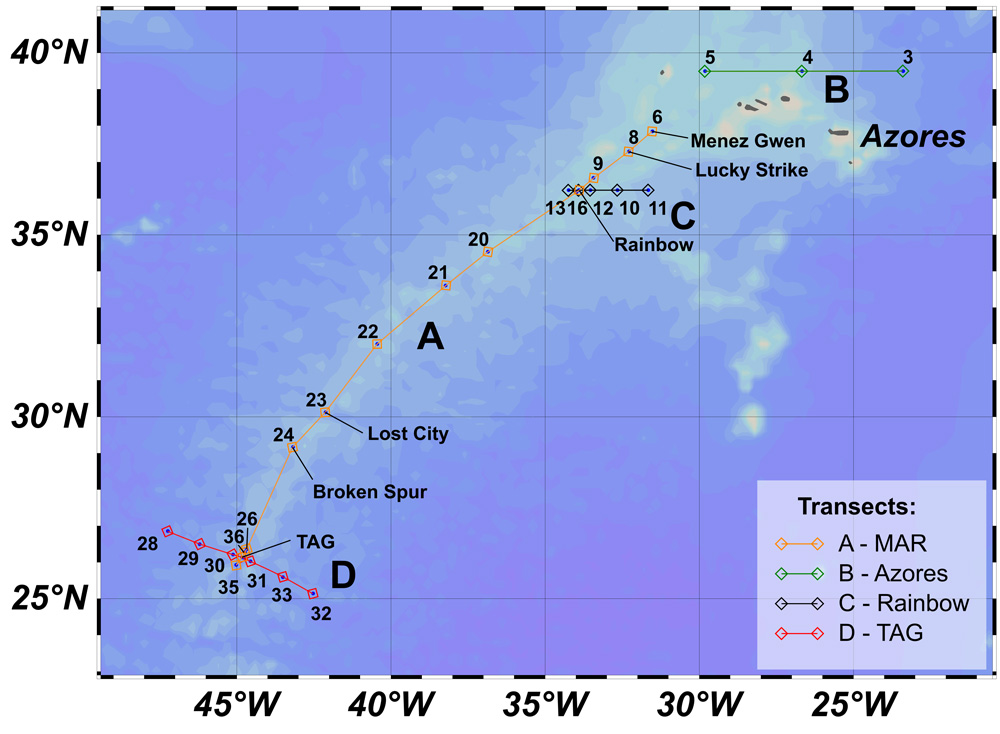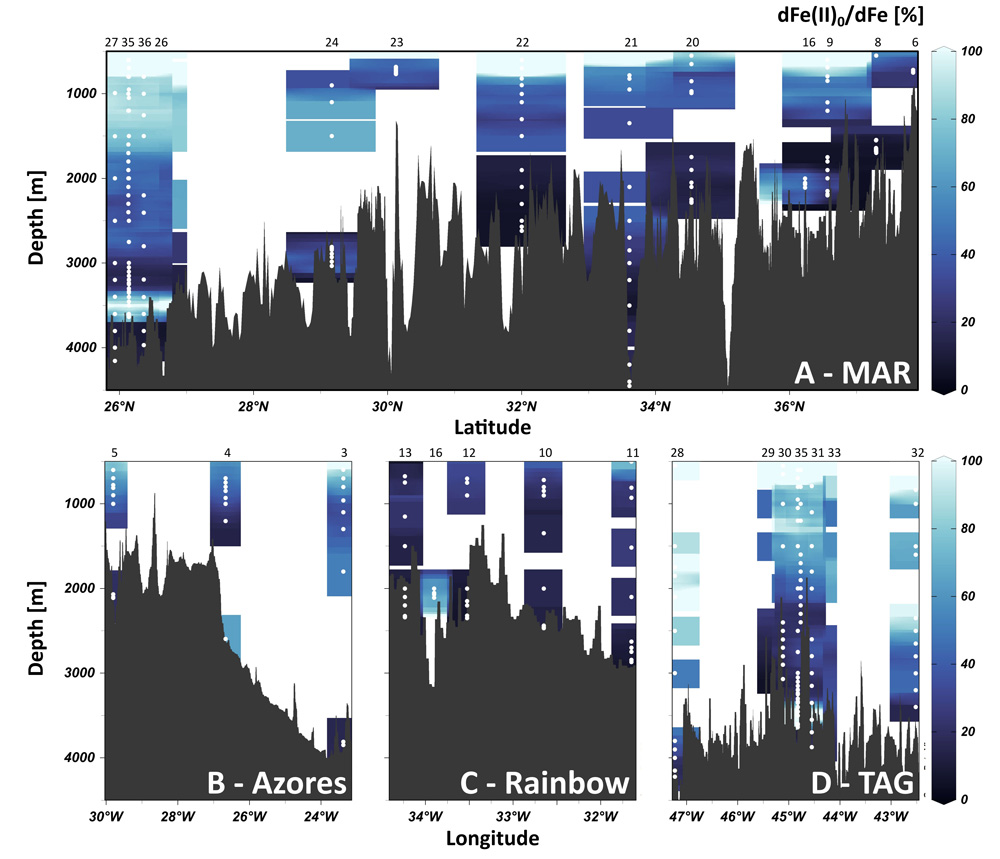Dissolved iron II deep concentrations re-estimated considering oxidation kinetic effets
The GEOTRACES GA13 section cruise (FRidge), departed from Southampton (UK) and arrived in Guadeloupe (France) following the Mid Atlantic Ridge. Along the way, full depth stations were carried out. At thirty-two stations, iron (II) concentration and the apparent iron (II) oxidation rate constants samples were collected using the Trace Metal Rosette. During the study, six hydrothermal vent sites (Menez Gwen, Lucky Strike, Rainbow, Lost City, Broken Spur and TAG) were visited.
Gonzalez-Santana and his collaborators (2023, see reference below) demonstrated that the oxidation kinetic of the samples combined with analysis of triplicate subsamples of the same bottle led iron (II) concentrations to decrease with time. This loss rate could be computed using a theoretical equation described in González-Santana et al. (2021). As such, the measured iron (II) concentrations were the concentration when the sample was analysed, and the deep ocean iron (II) concentration was calculated to determine a possible iron (II) concentration range. This work shows that dissolved iron (II)0 could account for >20 % of the dissolved iron pool and not the previously reported <10 %.


References:
González-Santana, D., Lough, A. J. M., Planquette, H., Sarthou, G., Tagliabue, A., & Lohan, M. C. (2023). The unaccounted dissolved iron (II) sink: Insights from dFe(II) concentrations in the deep Atlantic Ocean. Science of The Total Environment, 862, 161179. Acces the paper: 10.1016/j.scitotenv.2022.161179
González-Santana, D., González-Dávila, M., Lohan, M.C., Artigue, L., Planquette, H., Sarthou, G., Tagliabue, A., Santana-Casiano, J.M., 2021. Variability in iron (II) oxidation kinetics across diverse hydrothermal sites on the northern Mid Atlantic Ridge. Geochim. Cosmochim. Acta 297, 143–157. Access the paper: 10.1016/j.gca.2021.01.013.
